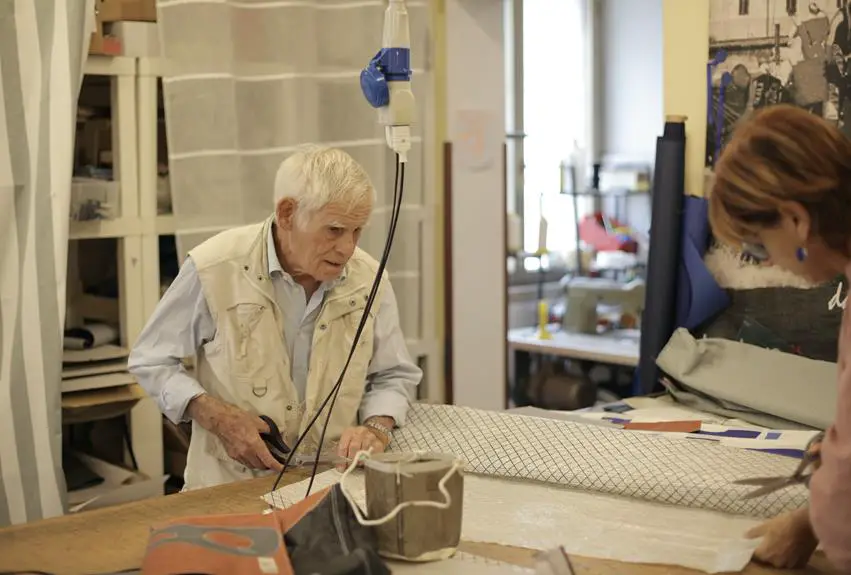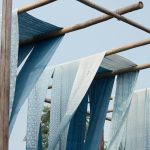Looking to add that extra touch to your fabric projects? As they say, 'The devil is in the details,' and trimmings can take your creations from ordinary to extraordinary. Trimmings encompass a wide variety of decorative elements, such as ribbons, lace, fringe, and beads, that can elevate the aesthetic appeal of your fabric projects.
Whether you're embellishing a garment, creating home decor, or crafting accessories, the right trim can make a world of difference. In this guide, you'll explore the different types of trimmings, learn how to incorporate them into your projects, and discover tips for selecting and applying the perfect trim.
Get ready to master the art of enhancing your fabric projects with the power of trimmings.
Key Takeaways
- Trimmings such as ribbons, lace, fringe, beads, and tassels can add decorative and stylish elements to garments, accessories, and home decor items.
- Mixing and matching different types of trimmings, layering them, and using them as focal points can create unique and personalized looks.
- When choosing trimmings, consider color coordination, texture contrast, and the weight and texture of the fabric to ensure a cohesive and visually interesting result.
- Proper application of trimmings, using the right tools and techniques, and following care instructions can help achieve a polished and professional finish on fabric projects.
Types of Trimmings
When enhancing your fabric projects, consider using various types of trimmings such as ribbons, lace, and fringe to add decorative elements and texture. These creative embellishments can elevate the overall look of your project, adding depth and visual interest.
Ribbons are a versatile option, available in different widths, colors, and textures, making them perfect for adding decorative edging to garments, accessories, or home decor items. They can be used as borders, bows, or woven into intricate patterns to create a unique look.
Lace, on the other hand, adds a delicate and intricate touch to fabric projects. Its fine and open weave makes it ideal for decorative edging on garments, table linens, or curtains.
Fringe, with its playful and bohemian vibe, can bring a dynamic and tactile element to your creations. Whether you're adding it to a scarf, pillow, or garment, fringe can create movement and a sense of whimsy.
Ways to Incorporate Trimmings
To enhance your fabric projects, consider incorporating trimmings in innovative ways to elevate their visual appeal and tactile experience. There are numerous creative applications and unique combinations that can take your fabric projects to the next level.
Here's how you can incorporate trimmings to add that extra flair to your creations:
- Mix and Match: Experiment with combining different types of trimmings such as lace, ribbons, and tassels to create a unique and personalized look for your fabric projects.
- Layering: Layering trimmings can add depth and dimension to your projects, whether it's adding multiple layers of lace for a vintage-inspired design or combining ribbons and beads for a contemporary feel.
- Focal Points: Use trimmings as focal points to draw attention to specific areas of your fabric projects, such as creating a statement neckline with a bold trim or embellishing cuffs and hems with intricate details.
- Textured Contrast: Incorporate textured trimmings like fringes or pom-poms to create an interesting contrast against the smoothness of the fabric, adding a tactile element to your projects.
- Unexpected Placement: Think outside the box and consider placing trimmings in unexpected areas, such as along seams, pocket edges, or even creating geometric patterns with trimmings to add a modern twist to your fabric projects.
Choosing the Right Trim for Your Project
Selecting the appropriate trim for your project is crucial in achieving the desired aesthetic and functional outcome. When choosing a trim, consider color coordination and texture contrast to enhance the overall look of your fabric project.
Color coordination plays a significant role in ensuring that the trim complements the fabric. You can opt for a trim that matches the dominant color in your fabric to create a cohesive and polished appearance. Alternatively, you may choose a contrasting color for a more dynamic and eye-catching effect.
Texture contrast is another important factor to consider. If your fabric has a smooth texture, you might want to select a trim with a different texture, such as a woven or embroidered trim, to add visual interest and dimension. On the other hand, if your fabric already has a textured surface, a smooth and sleek trim can create a balanced and sophisticated look.
Tips for Applying Trimmings
For enhancing your fabric projects with trimmings, you'll need to carefully apply them with attention to detail and precision. Here are some tips for applying trimmings effectively:
- Prepare Your Workspace: Before you start applying trimmings, ensure that your workspace is clean and organized. This will help you work with precision and avoid any potential messes.
- Use the Right Tools: Different types of trimmings may require specific tools for application. Whether it's a sewing machine, fabric glue, or hand-stitching tools, using the right equipment will ensure a secure and professional-looking application.
- Secure the Ends: When applying trimmings, make sure to secure the ends properly to prevent fraying. You can use a small amount of fabric glue or carefully stitch the ends to ensure they stay in place.
- Consider Creative Applications: Don't be afraid to think outside the box when applying trimmings. Experiment with different placement and layering techniques to create unique and eye-catching designs.
- Maintenance Tips: Once the trimmings are applied, consider the maintenance required. Depending on the type of trimmings used, you may need to follow specific care instructions to ensure longevity.
Trimmings for Different Fabric Projects
When enhancing your fabric projects with trimmings, consider the fabric's texture and weight to ensure the chosen trimmings complement the material effectively.
For home decor projects, such as curtains and cushions, consider using tassels, fringes, or pom-poms to add a touch of elegance and visual interest. These trimmings can be attached to the edges or seams of the fabric to create a sophisticated and polished look.
Additionally, for fashion design, delicate fabrics like silk or chiffon can be accentuated with lace trimmings, which add a romantic and feminine touch to garments like blouses or dresses. On the other hand, heavier fabrics like denim or wool can be paired with leather or suede trimmings to create a more structured and edgy aesthetic.
Frequently Asked Questions
Can Trimmings Be Used to Repair or Hide Imperfections in Fabric Projects?
Yes, trimmings can be used to repair or hide imperfections in fabric projects. They offer a creative way to enhance your fabric by concealing flaws and adding unique elements for a polished, professional look.
Are There Any Ethical or Sustainable Considerations When Choosing Trimmings for Fabric Projects?
When choosing trimmings for fabric projects, consider sustainable sourcing and ethical production. Look for materials that are eco-friendly and produced under fair labor conditions. By making conscientious choices, you can enhance your projects with a clear conscience.
How Do You Store and Care for Fabric Projects That Incorporate Trimmings?
When storing fabric projects with trimmings, it's essential to organize them carefully to ensure their longevity. Proper care and preservation of the trimmings will contribute to the overall preservation of the fabric project.
Can Trimmings Be Used to Add Texture or Dimension to Fabric Projects?
Yes, trimmings can be used to add texture or dimension to fabric projects. Incorporating various embellishment techniques allows for texture manipulation and creation of dimensional embellishments, adding depth and visual interest to your creations.
Are There Any Traditional or Cultural Uses of Trimmings in Fabric Projects That Could Inspire New Ideas?
Traditional uses of trimmings in fabric projects hold deep cultural significance, inspiring new ideas for both creative and practical applications. Understanding the history and symbolism behind these trimmings can elevate your fabric projects to new heights.
- Does Chiffon Fabric Stink - July 15, 2025
- Does Chiffon Fabric Affect the Economy - July 15, 2025
- Does Cotton Fabric Have a Nap - July 15, 2025




